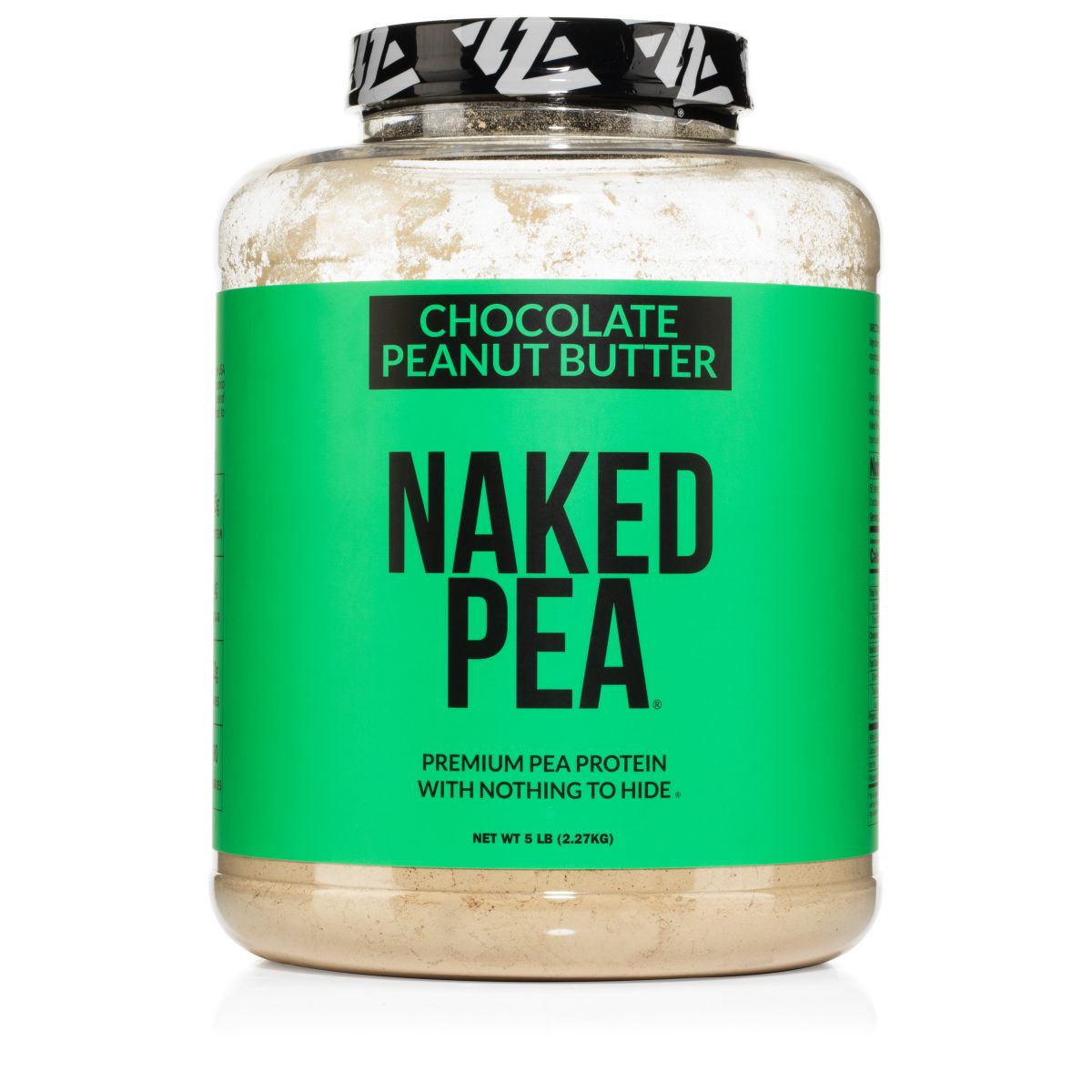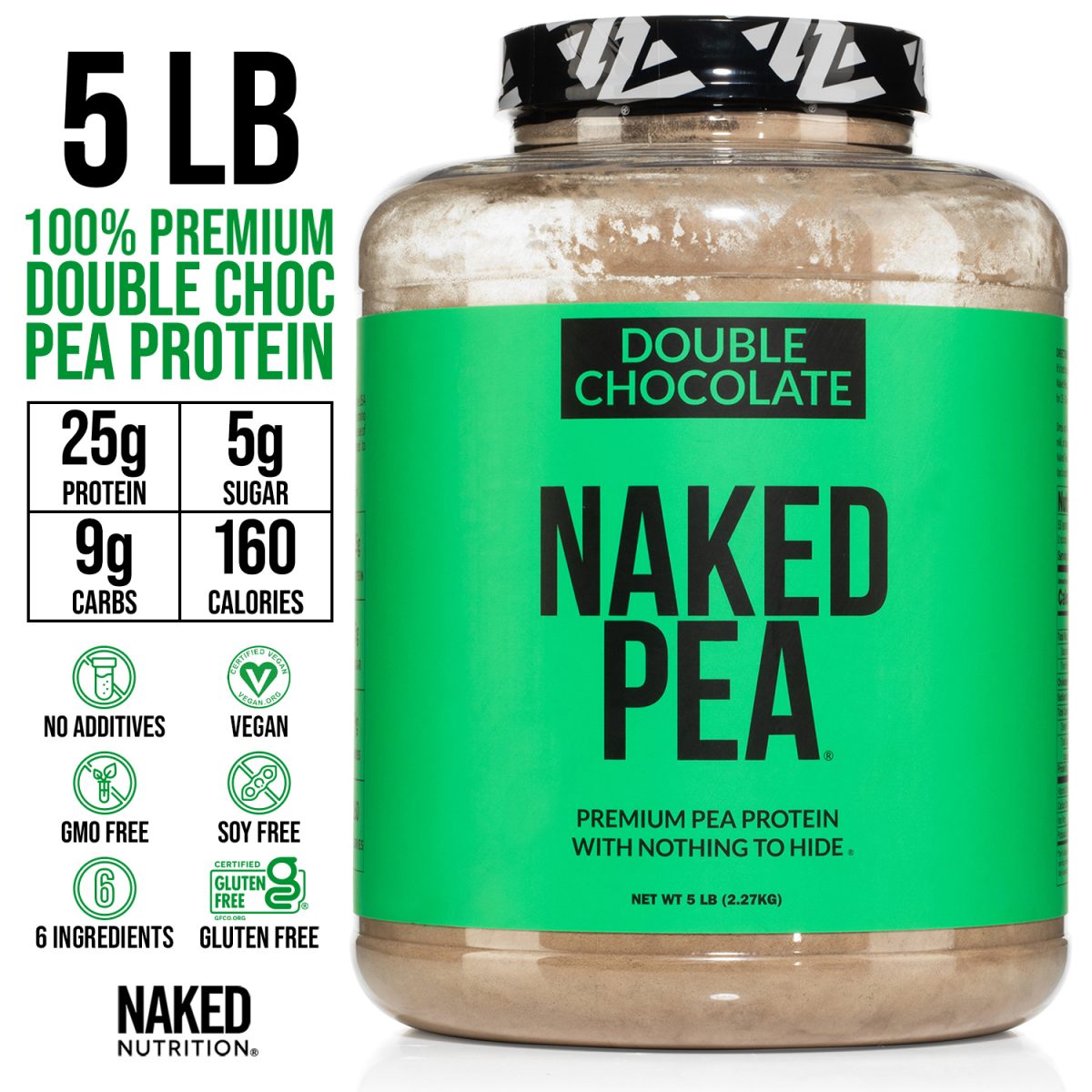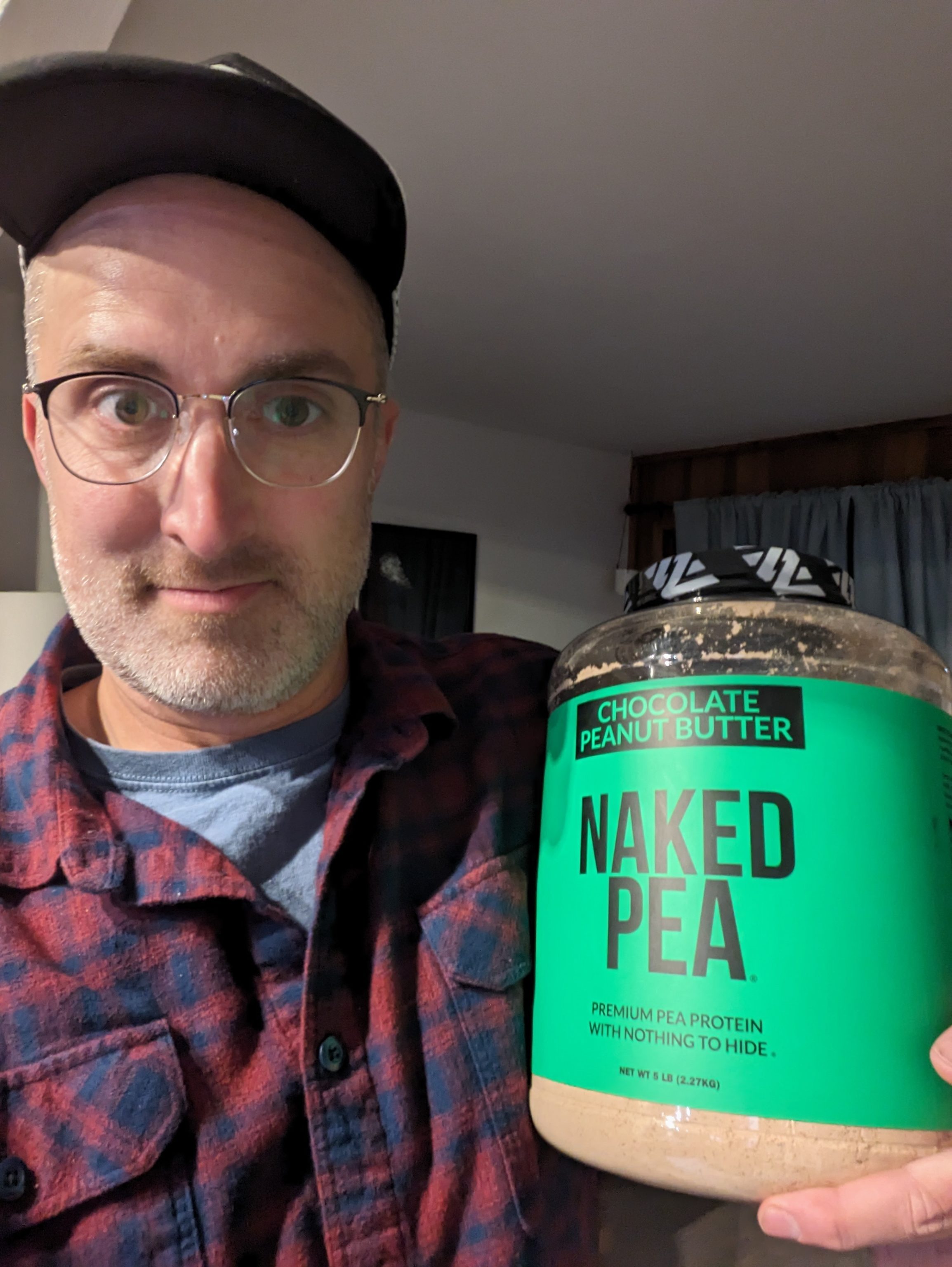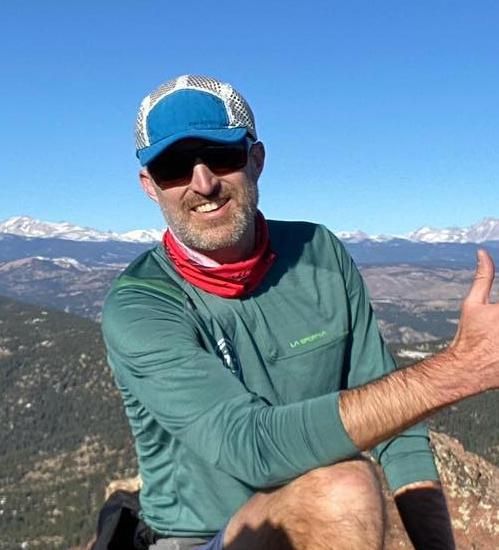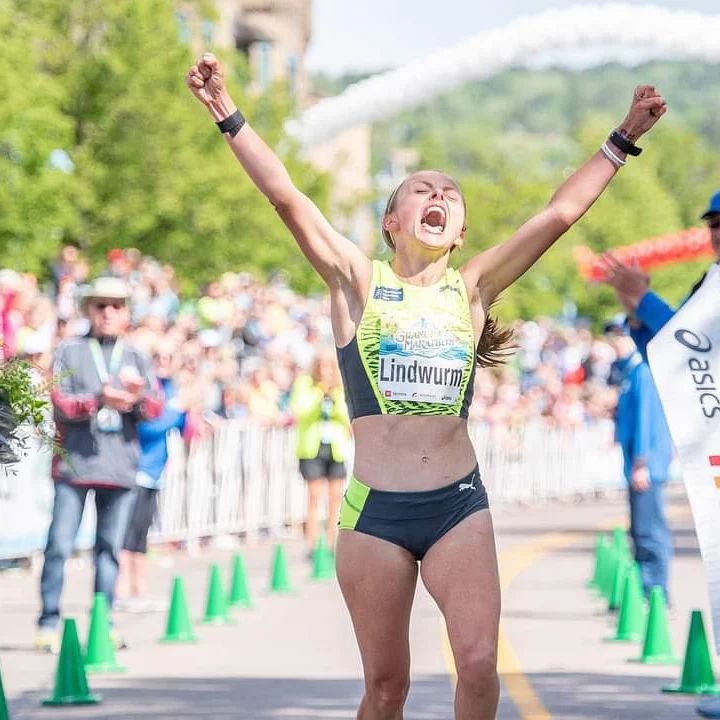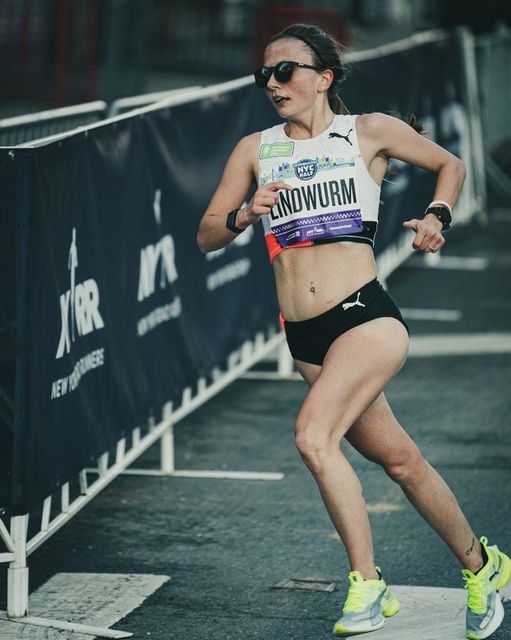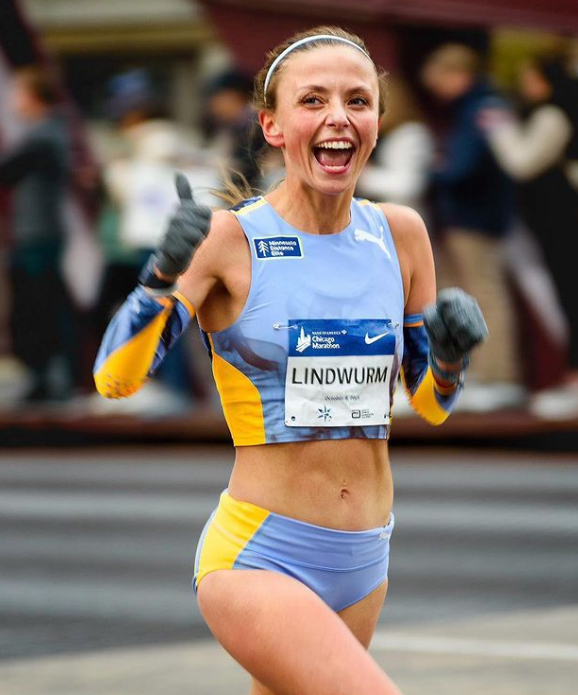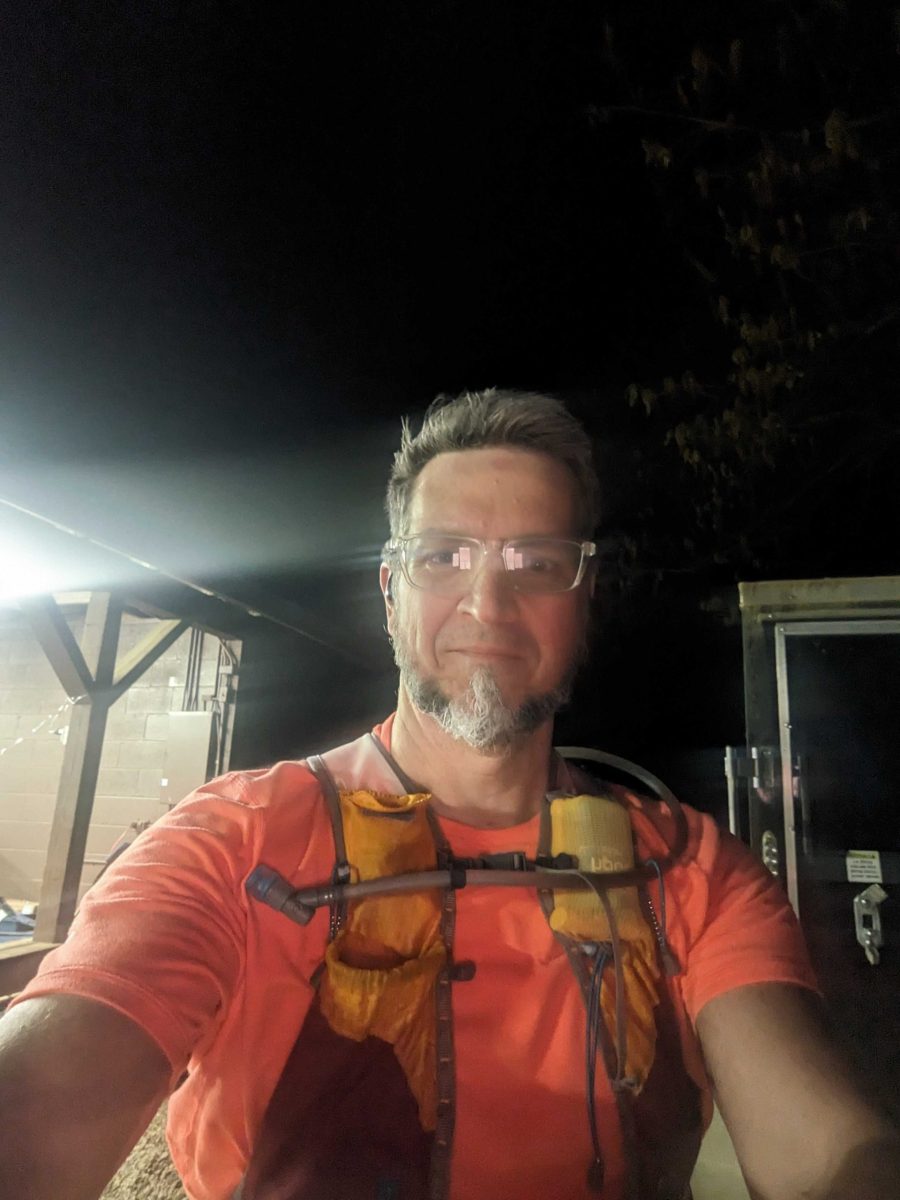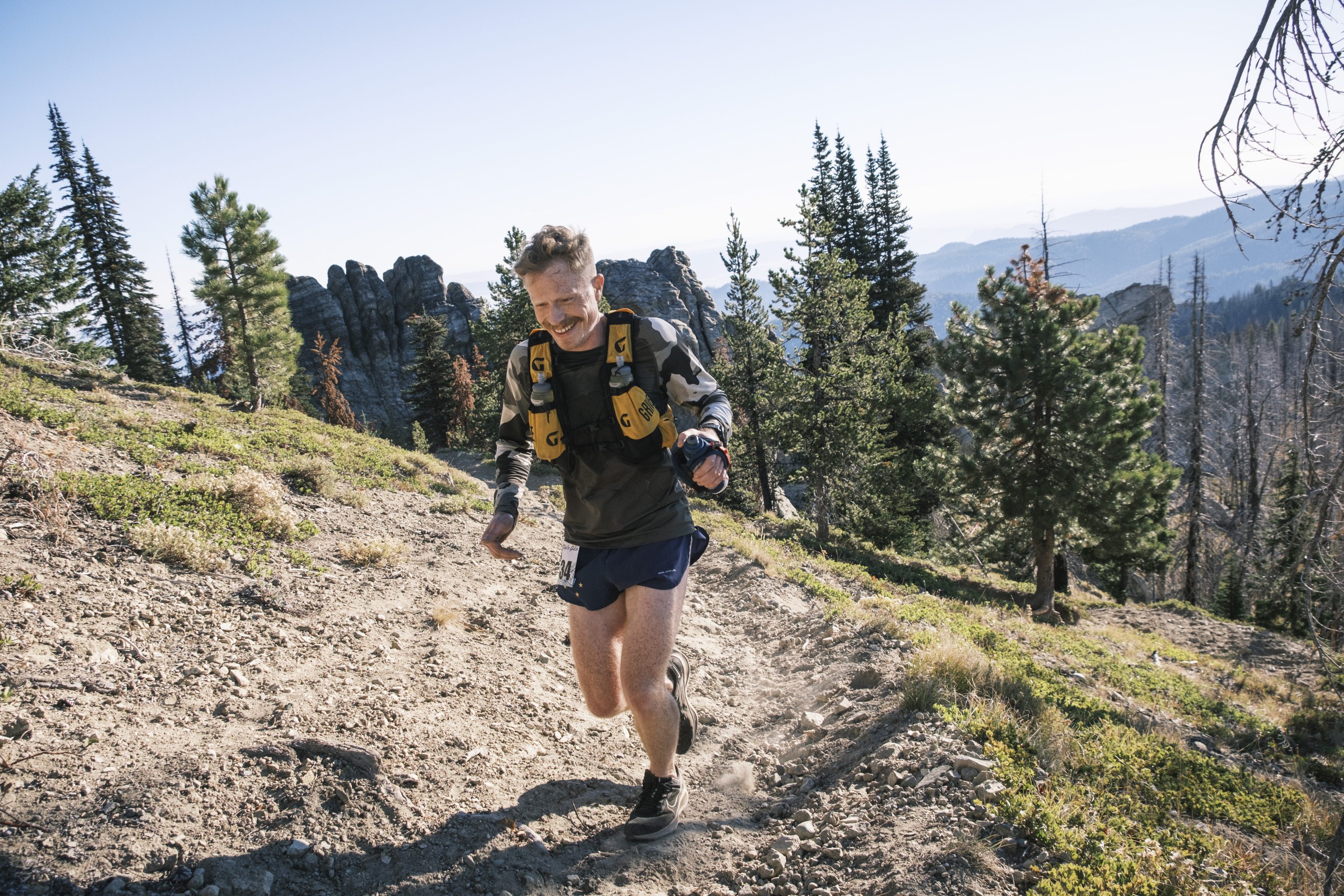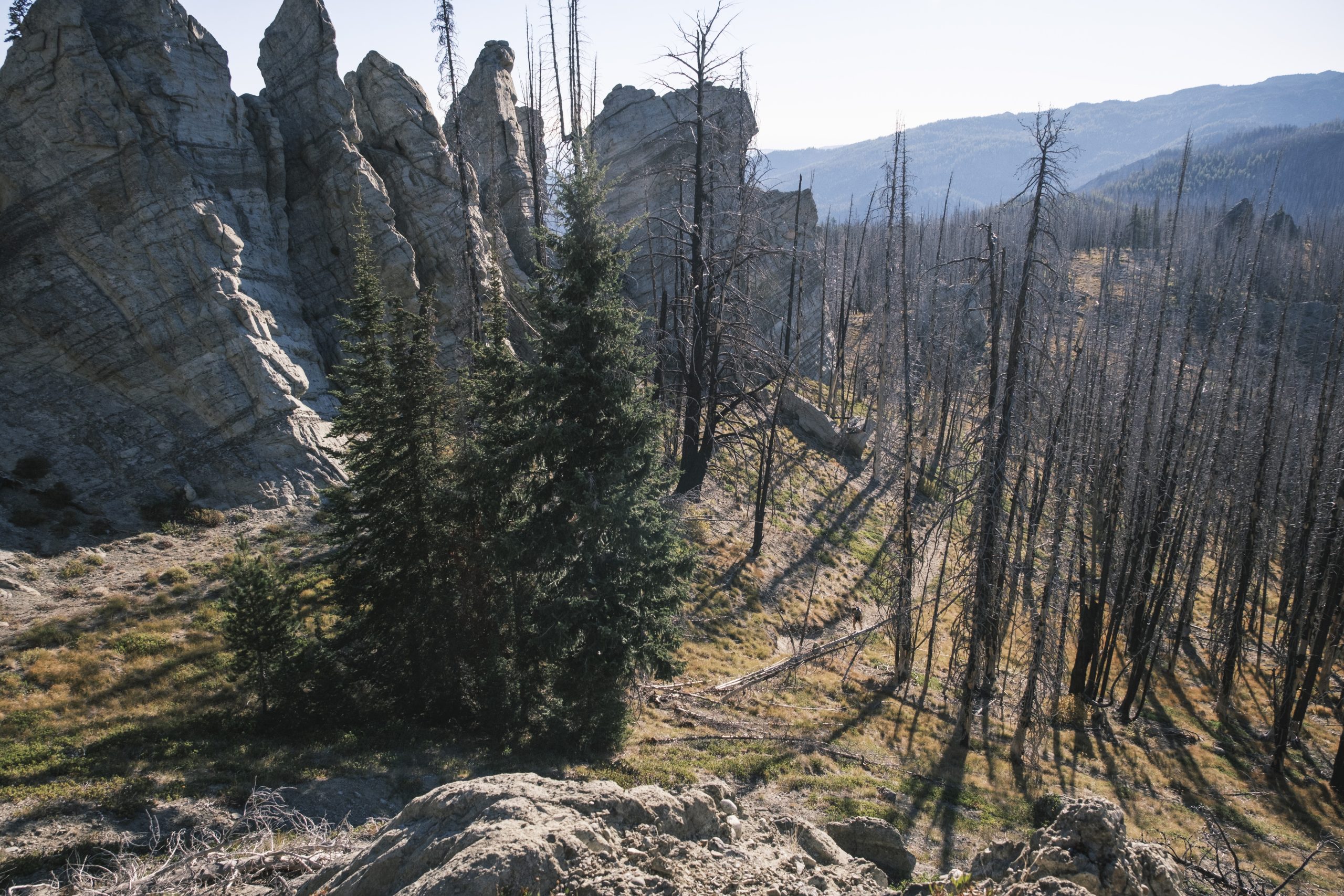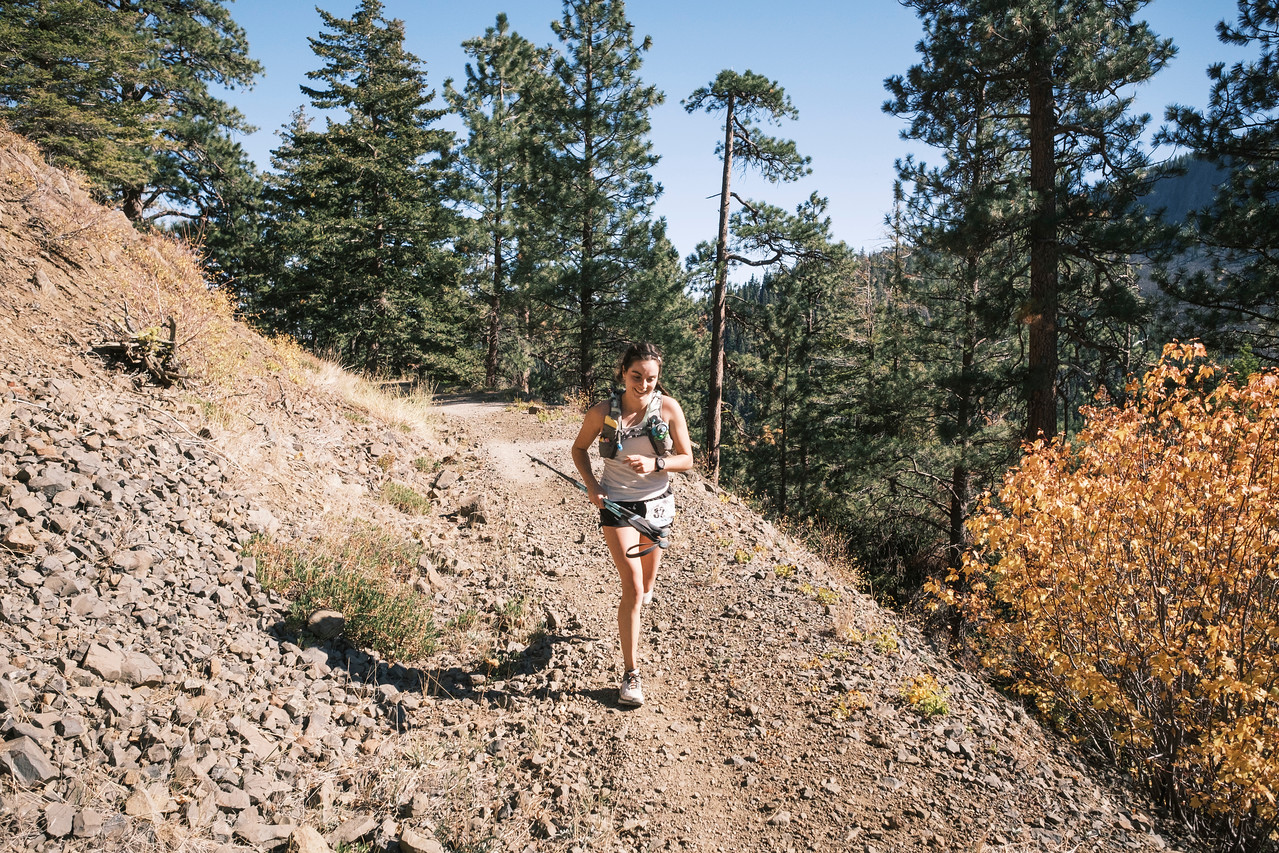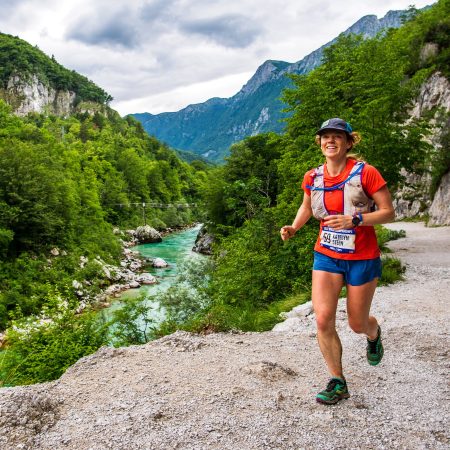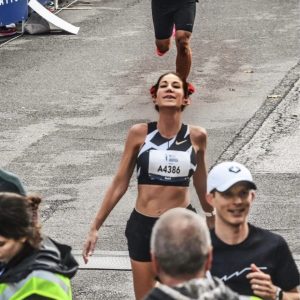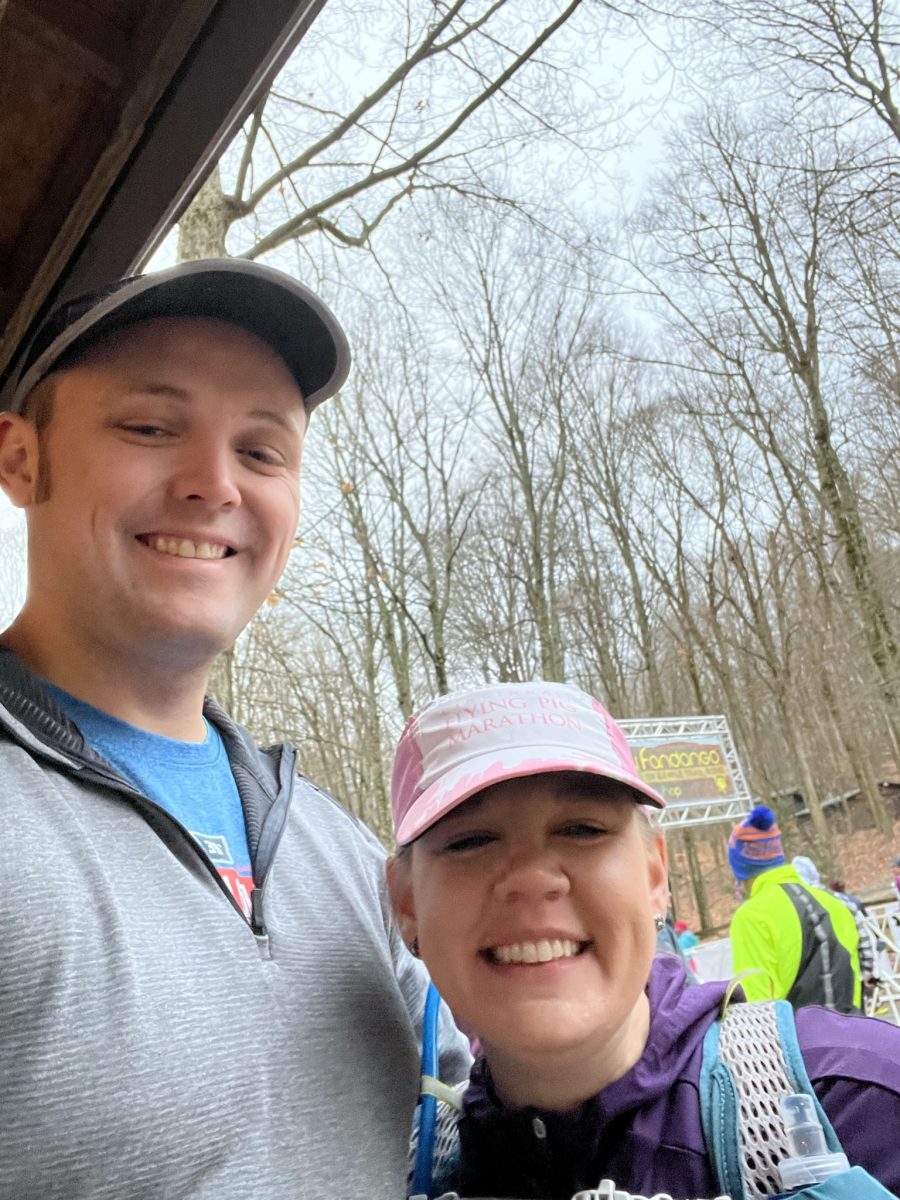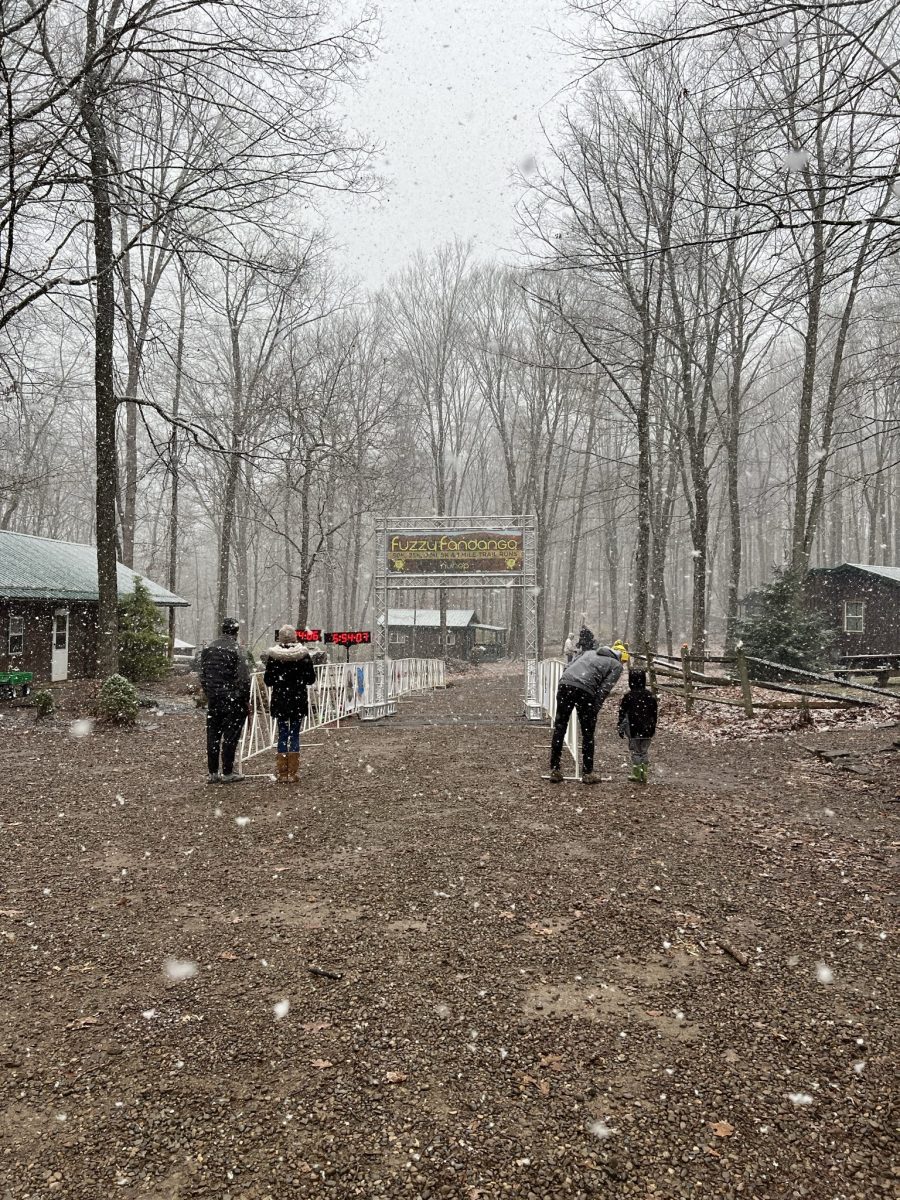Race: Black Canyon Ultras 100K
Runner: Coach Dandelion Dilluvio-Scott
Race Date: 02/10/2024
Location: Mayer, AZ
Results: 14:08:47
3 Bests – What aspects of the race did you like the most?
–The Saguaro forest: My regular training grounds consist of sage desert, high alpine mountains, slickrock, prairie and foothills. Running through the lofty saguaro cacti was a completely novel experience for me and I loved every moment!
–The unseasonable weather: More details will be included in other sections of this report. I’m a runner of the “grinder” variety so the frigid early temperatures, snow and mud featured in this year’s edition of the Black Canyon 100K played very much in my favor. Plus it’s fun to play in the mud!
–Tiny detail, but I was pretty psyched when Michael Versteeg refilled my flask at Bumblebee Ranch: Elite athletes flooded not only the field, but the aid stations as well. It really brought home that fact that even though we race at different levels, we all go through similar experiences as ultra-runners and are there to support each other no matter what the pace.
Not so much – Aspects of the race that didn’t do it for you
I’m not 100% certain this is the appropriate section for this detail, but the race was delayed twice (2.5 hours total) due to the snowy conditions impeding the shuttle service to the start at Mayer High School. This was a mild annoyance for me, mostly because I really wanted to run in the snow and the delay would allow more time for it to melt! Aaravipa did an outstanding job rolling with the punches, keeping us all informed and making sure the race went on despite the weather and shuttle company complications. In the end the delay was just that, a delay. It didn’t cause any lasting issues.
Weird factor – What’s the weirdest thing about this race?
Snow at the start of a desert race in Arizona!
Highlights of your race – What did you do well and enjoy about your race in particular?
Unlike my other recent races, I did not approach Black Canyon 100K competitively. Instead, I was focused on process goals, strategy, thoughtful pacing and Cocodona 250 recon.
I was probably the only athlete lined up on the saturated Mayer High School track who was exceedingly excited about the prospect of spending the next few hours running through mud. I learned to love playing in the mud while training for Bighorn 100. I also spent a bit of time on a muddy road in the days leading up to Black Canyon 100K as a tune up for the conditions and felt like I was stronger in the soggy stuff than ever. When the race began, I took a calculated risk and went out fast (but not hot). I figured I was likely one of the few runners unphased by mud and knew I could run for a long time at RPE 7-8 with without trouble in the muck. This would put me in a good position early on and ahead of the huge pack. Waves 2 and 3 were released together due to the delay and I didn’t want to fight to get ahead on a single track lined with cacti! This tactic worked well for me as I was able to pass lot of folks easily on the wide, muddy jeep trail. This put me in a position of less bottlenecking by the time the mud dissipated and the course converted to single track around mile 12. At this point I slowed to RPE 5-6 and took care not to blast my quads.
During my last race I experience quad pain for the first time while running downhill. My coach (yes coaches have coaches!) sagely observed that my “blown” quads might have more to do with an electrolyte problem than a downhill muscle thrashing. The weather at Black Canyon was cold and windy for the first few hours and, the warmest part of the day was more mild than hot. In short, it was ideal conditions to screw up hydration. I was determined not t allow myself to fall behind on electrolytes and fluids again and diligently began taking salt pills every 1-2 hours beginning at the first aid station and sipping water regularly. My quads experienced a bit of sensitivity later in the race (no surprise with the net downhill), but were in near perfect working order for the duration of the event.
In fact, my legs felt stronger than they have in any other race. I often default to power hiking during climbs as running uphill has historically been less sustainable and more taxing. However, I surprised myself during Black Canyon by running uphill effortlessly. Running became the default! In the middle portion of the race, I began to hold myself back from running uphill and intermittently power hiking more. Even though I felt amazing I wanted to remain conservative and exercise restraint. Black Canyon 100K’s second half is notorious for catching runners off guard with the increased vert and more technical terrain.
Throughout the final 50k, I kept waiting for the “hard part” to begin… but it never got hard. I would go so far as to say that second half was easier than the first. After playing things conservative in the middle of the course my pace gradually began to tick back up. I’m not sure if this is a testament to my increased fitness or holding back in the middle. Either way it was incredible to feel so strong right up until I crossed the finish line!
I was stoked to finish in front of the female pack with a time of 14:08:47. Looking back it is possible I was strong enough to run a few more hills mid-race and take off some time. I’ll never know and I’m happy I stuck with the planned conservative strategy mid-race. I could have also spent a little less time at aid stations, but I intentionally didn’t blast through them to keep this race a bit less intense mentally knowing what’s coming up later this season. I feel like a really nailed my race execution and the consequence was a solid performance!
Lessons for others – Share your pro-tips on the race to help the next runner
Temperatures shift quickly in the desert, especially during the winter. You can freeze and bake during this race even during a year void of snow. I suggest packing a variety of layers in the drop bags. I left the start line wearing an insulated jacket and was down to a tank top mid-day. Also, remember to drink and take in electroplates even when it’s cold and windy. In these conditions it is all too easy for dehydration to sneak up!
Lessons you learned that will help you next time around
Cacti are an obvious hazard on the course and I knew to steer clear of them whenever I dodged off to the side to pee. I didn’t really appreciate that nearly all desert foliage is sharp and got a cut up when I pushed through some innocent looking bushes! Oops!
Most important course specific knowledge to know about the race
Black Canyon 100K is a tricky course to pace. The first 50k is mostly a massive downhill, while the second half is more rolling and contains most of the vert. The setup of the course makes it extremely easy to go out way to fast and blow up during the later sections. Practicing restraint during the earlier portions of this race is critical to success. I think approaching the course with a very clear strategy and planned out RPEs for each section is very helpful in achieving sustainable pacing during this race.
Aesthetics – Is it a pretty course?
Absolutely! The course has expansive views of the Bradshaw Mountains, miles of ridge running, saguaro cacti and other desert flora… it was simply spectacular! Plus, we were treated to a sunset that looked like a painting!
Difficulty – Is it a tough course?
Deceivingly so! On the surface the net downhill and modest vert makes the course look easy on paper and it’s known for catching folks off guard. Even without the mud, the desert trails can be grueling. Although this is not the most technical trail I have experienced, there were certainly long rocky sections that felt more akin to my home trails in the Rockies than the Arizona desert. There were also three major river crossings, one of which had a swift current. To make things interesting, some cacti were leaning into the trail so agility and awareness were important in those instances! As previously mentioned, there are also the stark temperature fluctuations to contend with as well as tricky pacing.
Organized and well run – Did it feel like a well-oiled machine or were they flying by the seat of their pants?
Black Canyon Ultras 100K is an Aravaipa event and they are dialed!!! They resolved the morning shuttle issues immediately and, to my knowledge, the rest of the race proceeded without the hitch even with the altered cut offs, aid station volunteers being on course longer, etc. So many things could have unraveled and it would have probably been easier to simply cancel the race. The RD and Aaravipa deserve the highest praise for proceeding with the event and ensuring that the athletes were well informed and taken care of.
Competition – Is there a strong field?
YES!!!! Black Canyon 100K is a Golden Ticket Race! The top three male and female finishers are awarded automatic entry into Western States! There is a massive elite field every year and the 2024 edition was no different.
Logistics – Does it require a special handshake, registration a year in advance, hotels all booked? Give us the low down on the nuts and bolts of making the race happen.
Early registration is not necessary as there are about 1000 spots. However, it does eventually fill so I wouldn’t wait until the very last minute either. I purchased a tent camping permit with my registration at Deep Canyon Ranch, but opted to stay at Bumblebee Ranch last minute with no issue. There are also hotels and AirBnBs in Black Canyon City and nearby Anthem. I am uncertain how fast they fill though. I suspect booking a year in advance is overkill, but as this is a popular race with many folks involved, it is probably a good idea to book 6-8 months out if possible.
Aid Stations – Standard fare or anything special to know about the aid stations in terms of what’s available or when?
I use drop bags and usually don’t consume aid station food so I don’t remember details. I know I saw watermelon at one point and many Gu gels (Gu is a race sponsor). Satisfy sponsored the Bumblebee Ranch Aid Station and, as usual, it was something to behold! The course went right through a covered structure with al fresco style restaurant seating and Hors d’oeuvres lining a long counter. In the background a live band played upbeat music. This all struck me as highly delightful and highly dangerous! I bolted out of there as fast as I could before I was tempted to stay!
Weather and typical race conditions
Black Canyon 100K is located in a region where anything is possible. Generally, it is cold in the morning/evening and warmer during the day with no precipitation. There have been years where it was extremely hot midday, so heat training is advisable to prepare for this possibility. There are also years where it rains and mud is the highlight! To my knowledge this is the first time the course had snow in addition to mud!
Gear – Did you need anything special or is there anything you’d recommend for the next runner?
Gaiters! I always bring these with me when sand or mud is expected on the course! I never had to take my shoes off to remove dirt. I noticed many folks without gaiters stopped often to dig out debris. Sun sleeves were also great later in the day when it was still sunny, but cooling down.
Spectators – Is this a friendly course for your friends?
Overall, I think it is spectator friendly with some planning. There is limited parking for spectators at the Mayer High School start and the finish requires taking the shuttle. Bumblebee Ranch and Deep Canyon have plenty of parking for spectators and crew.
How’s the Swag?
Race entry included a t-shirt, Squirrel Nut Butter Tin, buff and drybag. There were also many other Black Canyon themed products available for purchase at the expo. All were great quality!
The Overall Score – How many stars do you give this race and do you recommend that others run it?
10/10… I would highly recommend this course! So unique!
Dandelion Dilluvio-Scott is a coach with Team RunRun. To learn more about her or to work with her, check out her coach profile.
